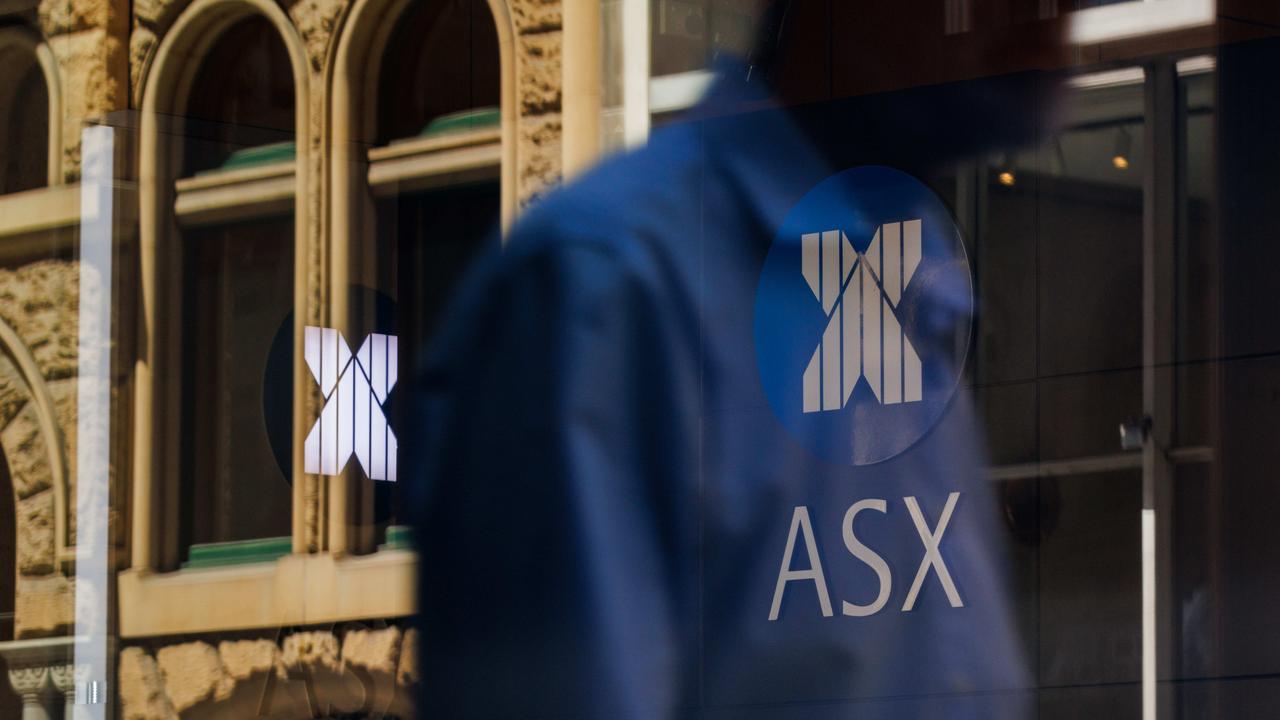Trading Day: live markets coverage; Investors lap up a2 Milk; plus analysis and opinion
The ASX has ended the session firmly higher amid subdued trade as the dollar dipped to a fresh five-month low.
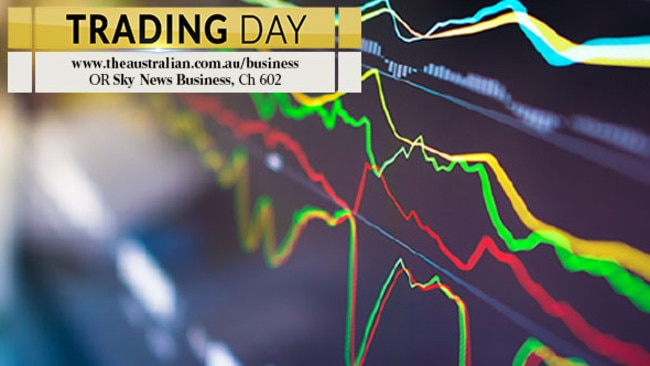
Welcome to the Trading Day blog for Tuesday, November 21.
Samantha Woodhill 5.17pm: Specialty Fashion gets first strike
A majority of shareholders in retailer Specialty Fashion Group have voted against the company’s remuneration report resulting in a first strike at its annual general meeting today.
More than 50 per cent of shareholders voted against the remuneration report, far more than the 25 per cent required for a first strike against the company.
It comes after the company posted a full-year 2017 loss nearly quadruple the prior year to $8.39 million, after a decision to exit its City Chic stores in the US triggered impairments.
Specialty Fashion Group currently has a portfolio of 1,019 stores, across its brands Millers, Katies, City Chic and Rivers.
In an address to shareholders, Chairwoman Anne McDonald announced plans to reduce the company’s store footprint by more than 300 stores as subdued consumer confidence and increased competition weighs on the company’s sales.
She said the company is taking actions to quickly reduce its store footprint, focussing on loss making stores on ‘hold over’ leases.
Samantha Woodhill 4.50pm: Stocks lift as dollar drops
The local sharemarket ended the session firmly higher, in line with gains in US futures on a quiet day of trade ahead, with volumes 12 per cent below the 20-day average.
At the close of trade, the benchmark S&P/ASX200 was up 17.829 points, or 0.30 per cent, at 5963.5 points. The broader All Ordinaries index was up 16.232 points, or 0.27 per cent, to 6044.200 points.
The Australian dollar carved out a new five-month low to US75.32c after surprisingly dovish comments on Australia’s low wage growth were released by the RBA from its November 7 policy meeting.
“In most advanced economies, growth in wages and hourly earnings had been low, despite ongoing reductions in spare capacity,” the minutes said.
Low wages could require the RBA to rethink its inflation forecasts and prompt it to keep interest rates low, economists warn.
Financials were mixed, with Westpac adding on 0.25 per cent to $31.90 and ANZ lifting 0.17 per cent to $29.33, while Commonwealth Bank slipped 0.04 per cent to $80.58. NAB was unchanged at $30.03.
In resources, BHP Billiton gained 0.41 per cent at 27.23 and Rio Tinto rose 0.42 per cent to $71.10.
Bridget Carter 4.45pm: China’s JMA circles I-Med
Chinese conglomerate JMA is believed to be circling I-Med in the final stages of the contest for the Australian radiology provider.
Final bids are due within days and the winner of the Morgan Stanley and Rothschild-run competition is expected to be announced in the early weeks of December.
The expectation is that the company will sell for about $1.2 billion, with as many as five parties left in the running.
4.02pm: a2 Milk shares surge
Shares in The a2 Milk Company have surged after the fresh milk and infant formula supplier said revenue and profit grew strongly in the first four months of the current financial year.
The New Zealand-based company on Tuesday said revenue for the four months to October 31 was up nearly 69 per cent at $NZ262.2 million ($236.7m), reflecting strong growth in nutritional products in Australia, New Zealand and China, as well as positive momentum in the US and UK.
The dual-listed dairy firm’s net profit for the same period more than doubled to $NZ52.3m.
The news drove a2’s ASX-listed shares (A2M) up 36 cents, or 5.09 per cent, to $7.43 at 12.35pm (AEDT).
Michael Roddan 3.30pm: APRA sounds alarm on household debt
The prudential regulator has belatedly put exploding household debt levels on its radar, as it urges banks to improve lending standards and better measure borrowers’ expenses and indebtedness.
Speaking at the Australian Securitisation Forum in Sydney, chairman of the Australian Prudential Regulation Authority Wayne Byres warned the rate of non-performing loans, where borrowers were failing behind on mortgage repayments, had nearly reached “post-crisis” highs.
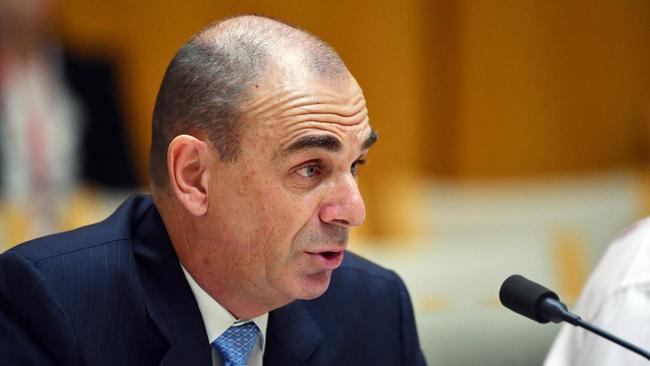
“The overall rate of non-performing housing loans is drifting up towards post-crisis highs, without any sign of crisis,” Mr Byres said. He said this did not gel with ultra-low interest rates and a steadily declining unemployment rate, noting the increase in loan arrears was a sign tougher lending standards were warranted.
Mr Byres said the regulator was now focusing on how lenders assessed living expenses and total indebtedness, and told the banks to “devote more effort to the collection of realistic living expenses estimates from borrowers”.
Annabel Hepworth 2.50pm: Economic recovery to boost Rex
Airline Regional Express says that expectations the economy will continue on its “modest” recovery will translate to a continued growth in the number of passengers.
In an address to today’s annual general meeting, Rex deputy chairman John Sharp said the group’s rise in operating profit for the 2016-17 financial year was due to “the modest recovery in passenger revenue from Rex’s traditional network, contribution from Western Australia routes, lower fuel prices and slight improvement in the USD exchange rate.”
During the 2016-17 financial year, a 3 per cent recovery in passenger numbers helped Rex swing back to after-tax profitability. The airline’s statutory profit after tax was $12.6 million, compared to a loss of $9.6m the year before. Its profit before tax, the carrier’s preferred measure, was $17.8m for the 2017 financial year, a quadrupling of the result the year prior.
Mr Sharp said that the performance of the carrier during the first four months of the financial year -- when passenger numbers grew by 4 per cent year-on-year -- appeared to confirm this recovery.
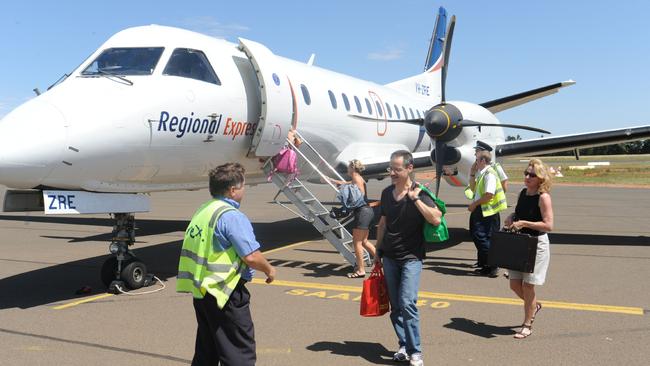
“Overall we are confident that Rex Group will continue to perform stronger if the Australian economy continues on its modest recovery,” Mr Sharp said.
In a presentation to investors, the company said there would be a “healthy” dividend payout ratio if the company met its profit targets for the 2017-18 financial year.
For 2016-17, the company paid a final dividend of 10c a share fully franked, the first distribution in five years.
1.40pm: ASX200 lifts as A$ hits 5-month low
Australia’s S&P/ASX 200 is up 0.3pc at a two-day high of 5965.4.
The index has extended its early rise as US futures turn up slightly.
It is also being helped by a weaker Australian dollar after dovish RBA Minutes.
AUD/USD hit a marginally lower 5-month low of 0.7532 - it fell from 0.7556 after the RBA Minutes.
However, the S&P/ASX 200 is yet to match the 0.5pc rise projected by overnight futures.
Volume remains light before the Thanksgiving holiday in the US on Thursday.
S&P/ASX 200 last up 0.3pc at 5963.2.
Samantha Woodhill 12.55pm: Consumers shop around before spending
Australian consumers are spending an increasing portion of their retail budget online but that doesn’t mean they’ve given up spending or researching in-store first.
According to a new report released by retail management platform Neto, the purchasing process is now multi-faceted and includes in-store research as well as using social media and other online comparisons.
Sixty-four per cent of shoppers surveyed said they search for products online after having seen them in store.

“Today’s hyper-connected consumers research, try, buy and return products via mobile devices,” said Neto founder and CEO Ryan Murtagh.
“They shop in-store, use a mobile phone to compare products online, have questions answered by a virtual sales assistant or a chatbot, and can purchase a competitor product before leaving a physical store.”
He said that while retailers are pushing ‘click and collect’ for online purchases, only 3 per cent of the consumers surveyed said they preferred a click-and-collect option.
“Ease and convenience remain the top priorities for consumers’ shopping experiences, and consequently so does an efficient fulfilment, shipping and returns process. The vast majority – 84 per cent - of consumers still prefer to receive their goods at home,” Mr Murtagh said.
Tools and hardware products was the fastest growing online purchases category, with the basket value of purchases up 47 per cent over the year. The basket value of purchases in the toys and hobbies industry hiked 39 per cent, while in the food and alcohol industry, basket value increased by 34 per cent.
Forty per cent of consumers surveyed said that fashion is their most frequent online purchase. Basket spend on fashion grew by 18 per cent over the year.
11.35am: RBA concerned about overseas wage grwth
The Reserve Bank is nervously watching labour markets in other major economies, noting scant wage pressures even as full employment has been reached.
The global labour market trends could signal a problem for the central bank, which expects inflation to rise back to within its 2-3 per cent inflation target over time, as excess job market capacity is slowly eroded. Wages growth has been at record lows for a number of years in Australia, helping to contain inflation.
In minutes of its November 7 policy meeting, published Tuesday, the RBA board noted “that in most advanced economies, growth in wages and hourly earnings had been low, despite ongoing reductions in spare capacity.”
“They discussed the possibility that globalisation and technology were leading wage growth to be less responsive to changes in the demand for labor, which could continue for a while,” the minutes said. “Wage growth had been slow to increase in many economies and core inflation had remained low.”
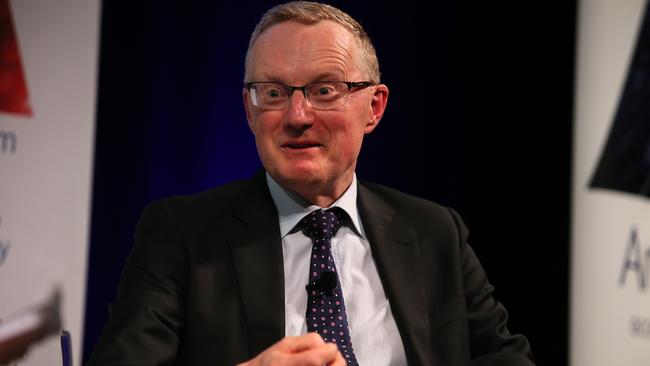
The minutes said there was considerable uncertainty among board members around when and how quickly wage pressures might emerge and about how much these would add to inflationary pressure.
“In particular, they noted that, among other factors, pressure on margins from strong competition and a faster-than-expected pick-up in productivity growth could delay the pass-through of tighter labour market conditions to inflationary pressure,’ the minutes said.
If wages don’t lift, economists warn it would likely require the RBA to rethink its already benign inflation forecasts, prompting it to keep interest rates low, but the minutes indicated the RBA remains satisfied with its policy settings for now.
The debate around the RBA’s board table comes as the International Monetary Fund said Monday said Australia might have to keep interest rate “lower for longer”, even as global interest rates rise. The RBA has kept its official cash rate at a record low of 1.5 per cent since August 2016, with markets now betting the next hike won’t occur until 2019.
At the conclusion of its annual review into Australia’s economy, the IMF said there was a lot of uncertainty around the outlook for wages and inflation.
Dow Jones Newswires
11.20am: ALS shares dive after weak results
Shares in lab testing and mining services business ALS have been hit hard by Monday’s first half result, diving 14pc to a 5-month low of $7.02 in early trading.
Deutsche Bank trimmed its valuation from $7.73 to $7.44 a share but kept its Hold rating. Brisbane-based ALS on Monday reported first half revenue of $761m, underlying EBIT of $110m and underlying net profit of $70m - at the very bottom end of management guidance of between $70m-$75m. “In our view ALQ reported a weak 1H18 result given the company’s $63m of goodwill impairment charges, the geochemistry business performing weaker than our expectations,“ Deutsche Bank noted, and trimmed revenue estimates for ALS’ commodities and industrials division for financial 2018.
ALQ last down 10pc at $7.35.
11.05am: Australian shares reverse Monday’s fall
Australian shares have reversed Monday’s losses and opened stronger following positive finishes in the US overnight.
At 1030 AEDT on Tuesday, the benchmark S&P/ASX200 index was up 15.9 points, or 0.3 per cent, at 5,961.6 with all sectors performing stronger.
OptionsXpress market analyst Ben Le Brun said Australian shares were taking the lead from Wall Street where a rebound in industrials pushed the Dow Jones Industrial Average higher, while declines in healthcare stocks limited tech-led S&P 500 and the Nasdaq gains.
“Obviously, we are teeing off from a stronger lead from Wall Street - albeit we are not quite as strong as the spot futures was estimating this morning,” Mr Le Brun said.
“But the banks have caught a bid, so that certainly is very positive, and we have most stocks in the ASX top 10 in positive territory. So, we are looking to build on the gains from here.”
Locally on Tuesday, strength across the big four banks drove the financial sector higher with ANZ leading the gains, up 0.4 per cent at $29.41. Major miners BHP Billiton, Rio Tinto and Fortescue Metals were up between 0.2 per cent and 0.8 per cent, thanks to a boost in the price of iron ore overnight. Gains in energy stocks were more modest amid a fall in oil prices, extending recent weakness ahead of next week’s OPEC meeting.
Shares in A2 Milk has soared almost five per cent to $7.41, after the company’s chairman said it has a strong platform from which to expand further into new markets and new nutritional categories. But Graincorp shares fell almost three per cent to $8.30, after the bulk grain handler said it had more than quadrupled full-year profit to $125.2 million, helped by a large grain harvest and higher export volumes. Meanwhile, the Australian dollar has slipped against the greenback, hitting a five-month-low in the process.
AAP
11.00am: IAG shares jump to record high
Insurance Australia Group shares are up 0.7pc at a record high of $7.22 after DataRoom reveals earlier Tuesday that the general insurer is is believed to be preparing to sell its portfolio of Asian assets as part of a strategic move to focus on its home market.
DataRoom reports: “The $17 billion insurer backed by Warren Buffett’s Berkshire Hathaway had ambitions to expand in Asia under its former boss Mike Wilkins. But current chief executive Peter Harmer, who has been at the helm since 2015, sees assets across the region as non-core and believes better opportunities exist using its resources locally, according to sources.”
10.54am: A2 Milk shares jump after profit surge
A2 Milk jumped 5.4pc to $7.45 after its trading update for the four months to October.
Revenue rose 69pc to NZ$262.2m, EBITDA rose 121pc to NZ$78.4m and NPAT rose 138pc to NZ$52.3m. CLSA’s Henry Hill says this should lead to a slight upgrade to consensus.
He says guidance for marketing spending NZ$30m above FY17 is higher than we expected.
A2 Milk said its Board “continues to believe that there is significant potential for further growth in our priority markets in Australia, China, the United States and the United Kingdom”. A2M last up 4.1pc at $7.36.
10.30am: GrainCorp results “weak” - CLSA
Graincorp’s FY17 results were “weak” according to CLSA’s Richard Barwick.
He says NPAT of $142m was 9pc below consensus.
And EBITDA of $390m was 6pc below consensus.
“Relative to our forecasts all segments came in lower with Oils the weakest,” he says.
“As normal, no guidance for FY18 but calling out a substantially lower crop on east coast Australia (this is known). He notes that management also said “we expect continued strong performance from Malt ...” but “Oils’ Foods business is responding to margin compression”.
GNC chsares are down 2.9pc to a 3-week low of $8.30 in early trading.
10.15am: ASX200 to lag global shares in 2018 - UBS
Australia’s share market is likely to lag global share again next year, but the S&P/ASX 200 should nevertheless rise 5.5pc to 6275 points, according to UBS equity strategists David Cassidy and Dean Dusanic. The key headwind is likely to be comparatively sluggish EPS growth relative to what UBS expects to be posted globally and regionally.
But the Australian resource sector “does present as a source of some potential upside to
2018 earnings estimates” as a mark-to-market of current spot commodities would suggest earnings upgrades in the order of 20-30 per cent.
The strategists have an overweight rating on in resources, in part due to an expectation of solid global growth supporting commodity prices, but also because of relatively
undemanding valuations and the ability the resource sector to act as a hedge against
rising inflation and interest rates.
They are also overweight other financials, neutral banks, underweight REITs and underweight high P/E areas such as healthcare, on line media and China consumer plays, but are
overweight selected GARP plays. Index last 5954.9
9.45am: Risks priced in for CC-Amatil - Macquarie
Coca-Cola Amatil shares have already priced in a “degree of downside”, despite some risks to consensus EPS as consumers react to higher product prices before the start of the Container Deposit Scheme in NSW from Decmember 1, according to Macquarie. The broker also says the outlook for CC-Amatil in Indonesia is strong. Still, Macquarie says its data scraping or retail pricing of CC-Amatil products shows retailers are yet to pass the higher prices to customers. Macqurie has an Outperform rating and $8.80 target price. CCL last $7.98.
9.30am: ASX200 expected to open up 0.5pc
Australia’s S&P/ASX 200 share index is expected to open up 0.5pc based on overnight futures relative to estimated fair value. Overnight, the S&P 500 rose 0.1pc, despite expectations of a fall. The DJIA rose 0.3pc, while the Russell 2000 small caps index rose 0.7pc.
Commodities were mostly positive apart from oil and gold.
WTI fell 0.8pc to $US56.09 and spot gold dlipped 0.7pc to $US1276.92.
But spot iron ore rose 1.4pc to $US63.47, coking coal rose 1.8pc and LME copper rose 0.8pc.
IG chief market strategist Chris Weston doubts the S&P/ASX 200 will have enough news this week to break above chart resistance from last Friday’s high at 5991. However, he concedes that banks could push the market higher given the relatively strong performance US peers overnight. The KBW Bank index rose 0.5pc. Still, Australian banks normally drag the S&P/ASX 200 down this month after they trade ex-dividend.
RBA Minutes are due at 1130 AEDT and Governor Phil Lowe speaks at 2005 AEDT.
S&P/ASX 200 last 5945.7.
9.00am: Analyst rating changes
Domain intiated at Sell - Deutsche Bank
Macquarie Atlas raised to Add - Morgans Financial
Macquarie Atlas raised to Outperform - Credit Suisse
Aristocrat initiated at Equalweight - Morgan Stanley
Nanosonics cut to Hold - Bell Potter
Iress raised to Outperform - RBC Capital Markets
AWE raised to Outeprform - Credit Suisse
8.20am: Wall St closes higher
Gains in industrial shares helped push the Dow Jones Industrial Average higher.
Major indexes started the day little changed, then extended gains throughout the afternoon.
With the US stock market closed Thursday in observance of Thanksgiving and few major economic reports on the docket this week, some analysts and investors say trading is likely to be relatively quiet over the next couple of days.
The Dow industrials climbed 88 points, or 0.4 per cent, to 23448. The S & P 500 added 0.2 per cent and the Nasdaq Composite rose 0.1 per cent.
Australian stocks are set to follow Wall Street higher. At 8.20am (AEDT), the share price futures index was up 22 points.
Dow component 3M Co. rose 1.6 per cent, among the biggest gainers for the day in the US blue-chip index. Caterpillar added 1.1 per cent.
Meanwhile, shares of energy companies in the S & P 500 fell with oil prices, deepening their losses for the year.
Some investors said that, after a long rally that has driven major indexes up double-digit percentages in 2017, they wouldn’t be surprised if stock gains slowed over the next couple of months.
“Is a major pullback going to happen imminently? Probably not. But I do think most people are starting to think about how far we can move forward from here,” said Sean O’Hara, president of Pacer ETFs, who added that, after a long rally, shares in the US are looking expensive relative to their counterparts overseas.
Dow Jones Newswires
7.10am: ASX tipped to open higher
Australian stocks look set for a positive start after gains on Wall Street.
At 7.05am (AEDT) the local share price futures index was up 24 points.
In US afternoon trade, gains in industrial shares helped push the Dow Jones Industrial Average higher, while technology-led gains in the S & P 500 and Nasdaq were kept in check by declines in healthcare stocks.
With no major US earnings or economic data scheduled this week, trading volumes are expected to thin leading up to the Thanksgiving holiday on Thursday and an early market close on Friday.
With no clear catalyst for direction market focus remains on the US tax reform proposal.
The US House of Representatives passed their version of a tax bill last week. But the Senate, from which it has already faced resistance, is expected to vote on their version of the bill after Thanksgiving.
At 07.12am (AEDT), the Dow was up 0.35 per cent at 23,440.67. The S & P was up 0.20 per cent, at 2,583.88 and the Nasdaq Composite was up 0.12 per cent-wise, at 6,790.97.
Locally, in economic news today, the Reserve Bank of Australia releases the minutes of its last monetary policy meeting while RBA governor Philip Lowe is slated to speak at the Australian Business Economists’ dinner on the topic Recent Developments in the Australian and Global Economy.
The ANZ-Roy Morgan Consumer Confidence weekly survey also is due out.
In equities news, A2 Milk, Cabcharge and Monadelphous have their annual general meetings, while Graincorp is expected to release full-year results.
The Australian market yesterday closed lower despite recovering much of the ground lost in early trade due to a negative lead from overseas markets. The benchmark S & P/ASX200 index lost 11.6 points, or 0.19 per cent, to 5,945.7 points.
The broader All Ordinaries index fell 10.3 points, or 0.17 per cent, to 6,028 points.
With AAP, Dow Jones
7.00am: Dollar down again
The Australian dollar is lower against a slightly strengthened greenback as some risk sentiment returns to the markets.
At 6.35am (AEDT), the Australian dollar was worth US75.47 cents, down from US75.62 cents yesterday.
Westpac’s Imre Speizer says the US dollar rose slightly, along with US equities and interest rates, although it was not obvious why risk sentiment had improved. “The US dollar index is up 0.3 per cent on the day, after initially falling and then rising,” Mr Speizer said in a morning note.
“(The) EUR made a round trip from 1.1735 to 1.1809 and back again, perhaps still unsettled by news that German coalition talks had broken down.
“(The) AUD ranged between 0.7545 and 0.7575.”
The main local event risk today would be the release of the Reserve Bank of Australia’s November policy meeting, he said.
“We will be looking for further detail around the updates to their forecasts in the latest SoMP (Statement of Monetary Policy), in particular the lowering of their inflation forecast.
“The Nov. SoMP saw a change in forecast methodology to point estimates rather than ranges.” (Momentum (for the Aussie dollar) remains negative, vulnerable to a break below 0.7535 minor support if risk sentiment falters. The RBA minutes pose an event risk.”
The Aussie dollar is also lower against the euro but up against the yen.
AAP
6.40am: Stocks shrug off Germany woes
European stock markets ended the session higher, shrugging off a political crisis in Germany where talks to form a new government collapsed.
At the close of trading, Frankfurt’s DAX 30 index was up 0.5 per cent, bouncing back from a weaker start, France’s CAC 40 also added 0.4 per cent, while London’s FTSE was up by a modest 0.1 per cent.
A stronger showing on Wall Street — kicking off a holiday-shortened week that will launch the Christmas shopping season — helped underpin the upward momentum, traders said.
“European equities are in recovery mode, having initially opened lower after German coalition talks fell through late last night,” said Accendo Markets analyst, Henry Croft.
Investors were asking themselves whether a first-ever election re-run would be needed or a Merkel-led minority government, the expert said.
Merkel herself said new elections would be “the better path.” Earlier, the country’s president, Frank-Walter Steinmeier, had urged the political parties to rethink their positions and find compromises.
Merkel in September won her fourth national poll victory, but bled more than one million votes to the far-right AfD, plunging her own party into weeks-long coalition talks that have now failed.
“In case there will be new elections there is a good chance that Merkel might get a better result especially as the Germany economy has been booming since the election back in September,” said Markus Huber, a trader at City of London Markets.
Oil prices fell back after rallying almost $US1.50 on Friday when Saudi Arabia’s energy minister Khalid al-Falih said he remained committed to an OPEC deal to limit production.
Oil prices have risen in recent months, after both the Organization of Petroleum Exporting Countries and non-OPEC countries struck a landmark deal in late 2016 to cut crude production in an effort to combat a global supply glut.
AFP


